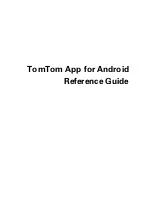
Wise Package Studio Reference
136
Wise Package Studio Tools
To add a digital signature to a patch
In the Patch Creation tool, on the Specify Upgrade Version page, mark Add a Digital
Signature to the Patch and click Next.
See
Creating a Patch File
on page 130.
Complete the Specify Digital Signature Settings page:
z
Web URL
Enter your organization’s Web site address.
z
Descriptive Name
Enter the name of your application. This name is embedded in your Authenticode
certificate to let end users verify the name of the application they are installing.
z
TimeStamp URL
Specify the URL you use for your timestamping service. Timestamping lets end
users distinguish between a certificate that has expired but was valid when it was
used to sign the installation, and a certificate that was used to sign an installation
while it was expired. The timestamping service must be available on your computer
to build the installation but does not need to be available to the end user running
the installation.
z
Certificate options
Signtool.exe with Personal Information Exchange file
Mark this to use signtool.exe and then specify the Personal Information
Exchange file (.PFX) to use. This option requires a password.
Signcode.exe with public/private key pair files
Mark this to use signcode.exe and then specify the credentials file (.SPC or
.CER) that contains your Digital ID, and your private key file (.PVK).
See also:
Setting Digital Signature Options in the Windows Installer Editor Help
Specifying the Patch Sequence
¾
Windows Installer 3.0 or later only.
To specify the patch sequence
1. Access the Patch Sequencing dialog box.
See
Creating a Patch File
on page 130.
2. On the Patch Sequencing dialog box, click Add to specify sequencing information.
The Patch Sequence Details dialog box appears.
3. Complete the dialog box and click OK:
Patch Family
Specify the patch family that this patch belongs to.
To sequence this patch after a specific patch, click Browse and select a patch file
(.MSP). This populates the Patch Family and the Sequence Within Family
fields. Example: If you browse to a patch that is in Family01 and has a
sequence of 10, the current patch will be added to Family01 with a sequence of
















































